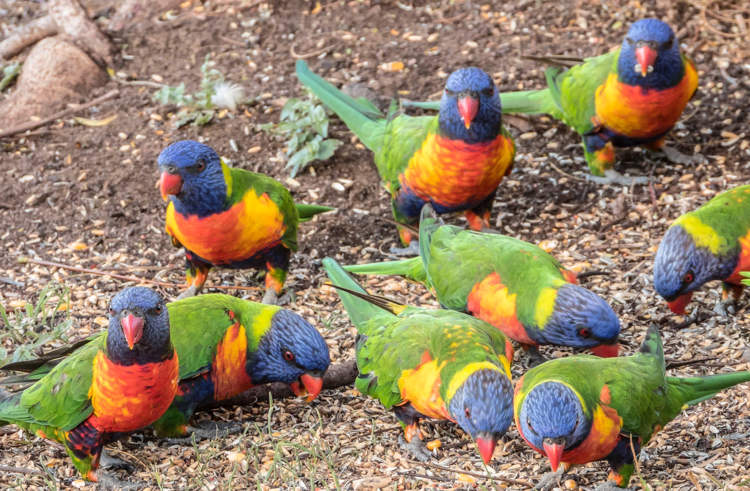Lorikeet Paralysis Syndrome (LPS) is a seasonal disease that occurs every year between October and June, causing lorikeets to drop out of the sky and become unable to move.
Ornithologists and veterinarians have known about Lorikeet Paralysis Syndrome for many years now, but despite their best efforts, the cause of the disease has remained a mystery. That is particularly alarming because the disease affects thousands of birds every year, and proves fatal to many of them, rendering them unable to feed or escape predators. Cases of LPS have been reported in Australia since 1970, and although scientists have been able to eliminate some probable causes, they still don’t know what causes it.

Photo: Michael/Unsplash
“We ruled out the common things that might cause the symptoms that these birds have – we know it’s not a toxin produced as a result of pollution, it’s not a toxin associated with pesticides or anything like that,” University of Sydney School of Veterinary Science Professor David Phalen told The Sydney Morning Herald. “We also know it’s not an infectious disease.”
Throughout the years, many theories have tried solving the mystery of Lorikeet Paralysis Syndrome, but so far none of them has been confirmed. At one point, the disease was associated with lead poisoning, thiamine, zinc or selenium deficiency, and some vets believe that it is caused by damage to the neck vertebra.
The most widely-accepted theory is that LPS is caused by a plant that lorikeets feed on in the months between October and June. The seasonality of the disease and the fact that it occurs in certain regions of Australia certainly point in that direction, but so far, no one has been able to identify what plant it is.
“There is an enormous amount of natural food out there, flowers of every sort, but somehow it’s causing a disease,” bird expert Darryl Jones from Griffith University told ABC News. “We don’t know the link — we know what it is, but we don’t know what is causing it or why.”
Finding the cause of this terrible disease has proven so tricky that bird experts have begun appealing to the general public, asking them to take photos whenever they see lorikeets eating a certain plant, that way they can investigate and at least take it off the list of potentially toxic plants.
Clinical signs of Lorikeet Paralysis Syndrome vary in severity and include an inability to fly, paralysis of all limbs and the neck, paralysis of the tongue, inability to swallow and even inability to blink. Some birds die as a result of these symptoms, such as the inability to feed, while others are either run over by cars or picked up by predators or ants on the ground due to their inability to move.
“I can only imagine what they must be going through, thinking about not being able to move and wondering how their end is going to come,” Prof. David Phalen said.
“They have a clenched claw, so they can’t land and hold on to a branch: that’s the simple problem,” Prof. Darryl Jones added. “They fall to the ground and starve to death or a predator gets them or ants get them. It’s a pretty horrible way to go.”
The first cases of Lorikeet Paralysis Syndrome have already been reported this year, but the seasonal disease is expected to peak in the months of December, January and February.












